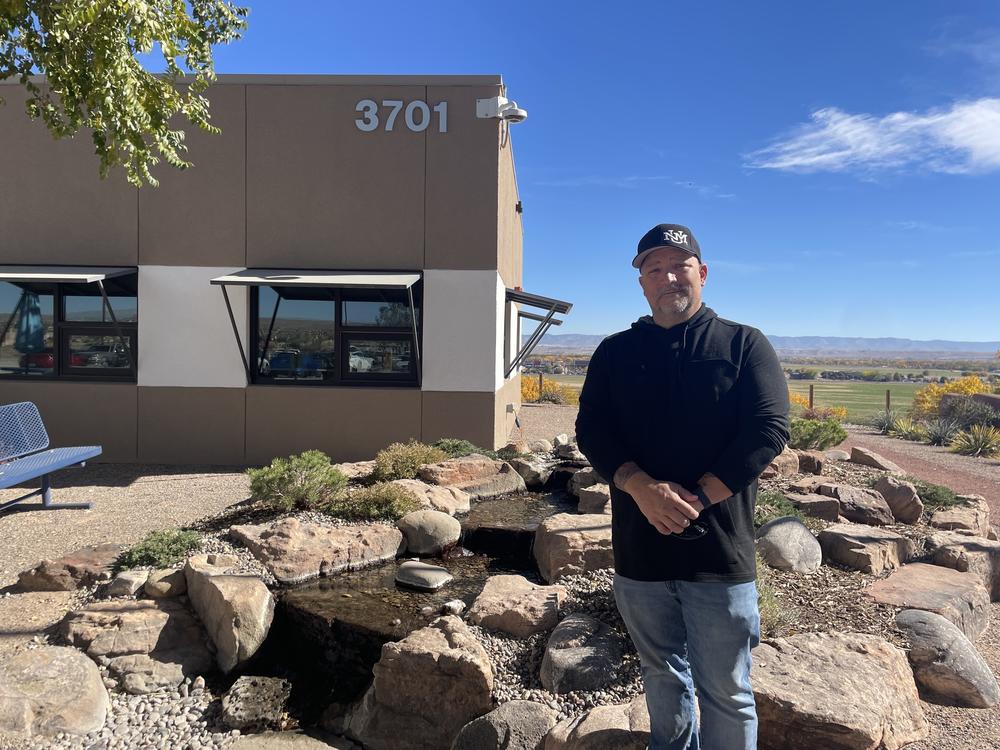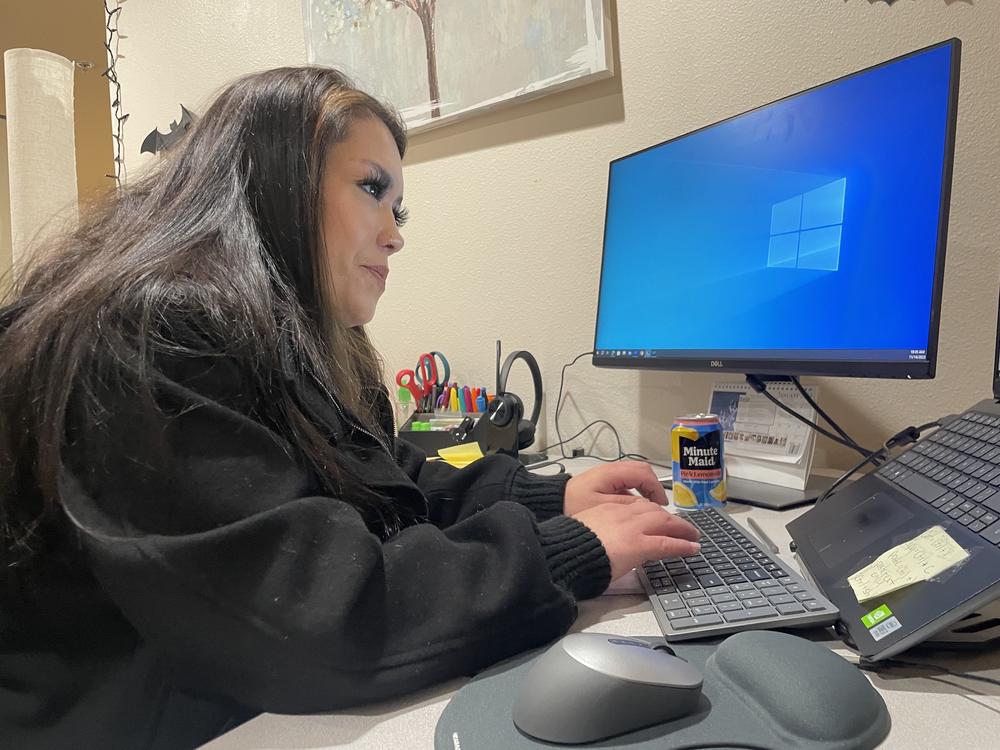Section Branding
Header Content
Health advocates criticize New Mexico governor for increasing juvenile detention
Primary Content
New Mexico is a small state, but it's near the top when it comes to death rates from both gun violence and drug overdoses.
The firearms mortality rate has doubled since 2005, to 27.8 deaths per 100,000 people in 2021 — making it #3 among states. In the same span of time, overdose deaths almost tripled, putting New Mexico at #6.
These problems came roaring into public consciousness last year, after New Mexico was roiled by three separate shooting deaths of children, as well as two mass shootings.
In response, Democratic governor Michelle Lujan Grisham signed a public health order on September 7 to address gun violence and drug use in the state.
The governor says the various measures are meant to send the message that, "if we don't do better, as state actors protecting people, we're going to lose another child."
Some of the new provisions, like a controversial ban on open and concealed carry in all public spaces in the Albuquerque area, drew lawsuits. The governor pulled back and instituted a more narrow provision, while legal challenges proceed through the courts.
Still, one part of the executive order remains standing. So far it has attracted little attention, despite containing a big change to how some minors are treated by the criminal justice system. That change involves the state's Juvenile Detention Alternatives Initiative (JDAI), which was rolled out in 2000 and is based on a research-backed model supported by the Annie E. Casey Foundation.
The JDAI program in New Mexico, and other states, allows some minors who might otherwise be sent to jail or juvenile detention to instead be released to their families, or be overseen by a community program, while their cases are decided.
Research shows that when children are put into locked detention, they are less likely to graduate high school and find jobs, and more likely to suffer mental illness, be rearrested and end up incarcerated.
Lujan Grisham's executive order overrules the normal assessment process of JDAI in New Mexico.
Now, if a minor is arrested for a crime involving a firearm in any way, they are automatically sent to juvenile detention. Alternatives are no longer available.
Since the change, nearly a third of the young people detained in the last 3 months are those who would have otherwise been allowed to stay home, pending trial.
Research doesn't support governor's order
Lujan Grisham says she made that move because she thinks time spent in detention could help young people confront addiction. "That's often the way that you get, particularly a young person or a young adult, to be able to accept treatment," she says.
But the governor's office did not provide evidence to back this assertion.
That's not surprising, according to experts in addiction and juvenile justice, because the research just isn't there. They're alarmed by the change and say it could put vulnerable young people at risk.
They're particularly concerned about young people struggling with addiction, who have few options for recovery.
Detention rarely motivates young people struggling with addiction, says Dr. Matthew Aalsma, a pediatrics professor at Indiana University School of Medicine.
"Research has pretty consistently shown that a court order to treatment doesn't predict treatment engagement," Aalsma says.
At the same time, many kids learn worse behavior behind bars and usually go back, he adds.
"We're not going to police our way out of this issue," Aalsma says. "We need to have treatment available and really think through how we can keep young people safe."
The benefits of keeping troubled teens in their communities
The diversion options created by JDAI allow young people to stay in their communities, and be supported by local institutions and networks.
"We want them to be connected to school. We want them to be connected to family," Nate Balis, director of the Juvenile Justice Strategy Group at the Casey Foundation, says. "We want [them] to be connected to work opportunities. We want them to be connected to positive youth development opportunities in their communities."
If a kid is struggling with an addiction, he says, community supports are better than something punitive: "A much better approach to help a young person get into treatment is to make that referral in the community, to use resources in the community to motivate that young person to show up and to engage."
Her recovery happened in spite of juvenile detention
Joslyn Herrera agrees with the community-based approach, and has the personal experience to prove it.
Herrera works as a patient navigator at the Santa Fe Recovery Center. She helps connect patients with the various supports and services they'll need as they begin treatment for addiction. It's a big step, and a delicate moment in recovery.
On a recent Tuesday morning, Herrera talked with a coworker about a client arriving later that week on a midnight bus.
"She doesn't have anywhere to stay overnight," Herrera said, "So I was thinking maybe we can see if the crisis center would allow her to stay there," she said.
Herrera loves this work. It's personal. The 29-year-old is sober now, but spent years struggling with opioid addiction and homelessness. She started using painkillers by 13, she says, and had moved on to heroin by the time she turned 18.
During her teenage years, she was regularly sent to juvenile detention for shoplifting and resisting arrest. Her stays ranged from a single night to a few weeks at a time.
Herrera says that was a lonely time. Both her parents were also struggling with addiction, and she says she had no one to talk to, or help her through.
"I felt like I was on a plane that was going straight down literally to destruction," she says. "It happened so fast."
But her many stints in juvenile detention did nothing to address the underlying problem driving her behavior, which was the addiction to opioids, she says:
"At a young age, you should be offering them more support than putting them in a detention center."
Herrera did finally beat her addiction, but that came later, in her early 20s. Juvenile detention simply made her a better criminal, and brought more suffering, she says.
"It was a horrible experience, especially having to go through the withdrawals, being locked and confined in a place where they treat you disrespectfully," she says.
Detention alternatives used for almost 25 years
New Mexico has used the detention alternatives for almost 25 years. In the last 13 years, juvenile justice referrals have decreased to about one-fourth of what they were, and the New Mexico Legislative Finance Committee attributes that in part to changes in the state's approach to juvenile justice, which includes JDAI.
At the juvenile detention center in Albuquerque, there are some medical and psychological services, but Veronica Crespine, a registered nurse, says it's challenging to treat them for addiction because young people are usually there for only brief periods of time.
"We try to be mindful and get parents' buy-in, because if we send a juvenile home and parents are against it, then we're not going to have that continuation or continuity of care," she says.
The center also connects young people and their families with a program at the University of New Mexico that provides wrap-around services.
On Christmas Day, some detainees at the juvenile detention center in Albuquerque were involved in a disturbance that is now under investigation. This led to a rally on Jan. 9 over living conditions and inadequate staffing inside the center, held by family members of children currently at the center, young people formerly held there, and civil rights advocates.
Public health order aims to speed access to treatment
The governor's public health executive order also contains a different provision addressing the need for drug treatment, according to a spokesperson. This requires Medicaid contractors to find a placement within 24 hours of a request.
But following through on that might be difficult, because New Mexico lacks sufficient treatment for people struggling with addiction, including minors. A recent study by the state's Department of Health found only a third of New Mexicans struggling with addiction were getting treatment.
"We have a lack of resources in general for our young people," says Dr. Chloe Stoffel, who works with minors in recovery at the University of New Mexico. "But when it comes to kids struggling with substance use disorder, it's a much, much, much, much, much smaller pool of resources for those kids."
Pairing treatment with life skills
Serenity Mesa is a nonprofit treatment center for young people, located on a hill just above the Rio Grande in Albuquerque. David Burke co-directs the facility, and on a late fall morning, he watched a flock of geese fly overhead from the back porch.
"We've got an unobstructed view of the entire city," he says
Most kids treated here have already been in detention, and some are on probation. 'That's one reason the program goes beyond therapy and addiction treatment, and includes life skills like how to write a resume or get an ID, Burke explains.
"You put somebody in jail, you don't treat any of that stuff and you don't treat a way to get a job and to find a different way of doing things," he says.
"Then, you send them back out to the same place that they were, in the same environment, in the same situation. They're going to do the same things."
Burke says programs like his, that help build life skills, are more likely to help recovery stick than a punitive approach.
The scarcity is not just in New Mexico. Countrywide, drug treatment facilities that take adolescents have long waitlists and high costs, according to a new study led by researchers at Oregon Health & Science University.
According to the study, many treatment centers, especially for-profit organizations, are also prohibitively expensive and require patients and their families to pay upfront. It also says that if a child enters a facility, they also face the risk that the treatment offered is not evidence-based.
Serenity Mesa doesn't charge families for its services, relying instead on a mix of Medicaid reimbursements, taxpayer funds, and donations.
But that only pays for 14 treatment slots, and despite lobbying the state legislature for more funds, Burke has been unable to get additional support to help more adolescents.
This story comes from NPR's health reporting partnership with KUNM and KFF Health News.
Copyright 2024 KUNM. To see more, visit KUNM.


